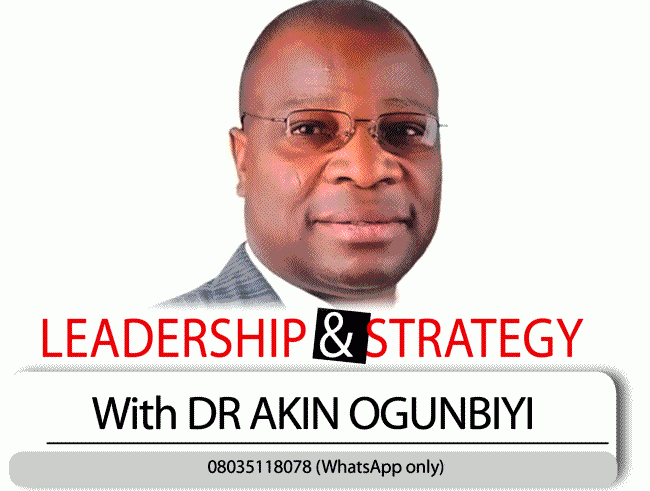Last weekend was the annual ritual of our group of companies, “The Annual Thanksgiving Service”. It was the 29th in the series. Mutual Benefits Group will be 30 years in October, this year. It is an event where I, as the Group Chairman, must exchange banters and shake hands with over 2,000 (two thousand) members of staff along with their family members, friends, partners, associates, other stakeholders, and of course, distinguished representatives of the regulators (NAICOM, SEC, and the Nigerian Stock Exchange).
Today, I will be looking at “Leveraging Knowledge of the Human Factor” as the ultimate in the leader’s value-adding role as the multiplier of relationships to achieve peak performance.
The leader is the forward-thinking strategist who engenders trust and makes it even bigger than the entire BRAND. The authority who showcases unique skills and knowledge. He leads in his niche. He is an expert and a thought champion.
His approach is the disciplined and figurative one. He does not just generate new and big ideas, but tackles challenges and exploits opportunities with informed decisions. He manages the human factor with the five disciplines or components of strategic thinking.
He “anticipates”, that is, prepares for today and tomorrow’s challenges and opportunities by identifying trends as well as predicting what will unfold. He is always challenging assumptions and the status quo. He interprets and decodes meaningful insights, recognizes patterns, makes informed choices and balances intuition with analysis.
The leader improves effectiveness by aligning with his team (teams) through decisive and well-rounded choices. He constantly revs up momentum and he is never stuck with absolutes. He stays ahead of the curve and maintains competitive edge through well-coordinated shared vision and efforts. As the leader of the versatile orchestra who regularly and skilfully organises outcomes that resonate and motivate actions, he has a learning-oriented mindset and is constantly engendering flexibility and adaptability. His activations are purposeful. People accept his decisions and run with them.
You need to see my images (photographs) methodically asking my team members and colleagues to join hands with me and visualize the “dancing” metaphors that signpost co-creation (value-adding collaboration) and purposeful shared vision.
I was challenging their guts so that they could feel the successes as they were unfolding. They must unleash hidden potentials, creativity and amplify their focus on the organisation’s goals and objectives. We must together harness the full benefits of the Law of Attraction through valuable insights and alignment of thoughts, beliefs and actions.
The gut instincts must come alive in us and the fire must be kindled so that we can achieve peak business performance. The clear goal is to make team members know what we want them to know, feel what we want them to feel and act with “gut” on their responsibilities.
In this era of artificial intelligence, AI tools should be managed along with human ingenuity. Please note that leaders must fully maximise the unique ability of the human being to think unconventionally (AI cannot do this). We refer to this as human creativity. Some experts call this engineering psychology. Engineering psychology is using psychology, human cognition and human performance to design useful systems. For example, leaders can use personal leadership skills for empowerment, collective awareness and accountability.
I will also like to mention the 5-factor Personality Theory of Human Behaviour. The factors are: openness, conscientiousness, extroversion (distinctive characteristic of orientation towards others), agreeableness and neuroticism (fear, anxiety and unhappiness).
Leaders, in their decision-making activities, must always remember that social factors (or the context of environmental activities) impact seriously on human factors. Successful leaders must therefore leverage social forces so that employees and associates can be confident in their decisions. They must be convinced that decisions are very well thought-through and therefore realistic. Convictions turn them into advocates of the brand and organisation.
The content of the environment activates important goals which shape actions. Anytime we take the workforce from one context to another, we tinker the key drivers of decisions. Effective leaders must therefore be nimble and quick-witted.
Human factors must be very well managed in an organisation. These include: poor communication, distractions, accepting the norms, stress and pressure, complacency, lack of awareness and teamwork, fatigue, lack of adequate and relevant knowledge as well as assertiveness.
You must influence others by relating to them. Do not confuse activity with productivity. Leadership, as mentioned earlier, is multiplying relationships. Leaders must invest in others. Believe in your colleagues and maximize their potentials. When you develop others, you will be worth following. Always make those around you better.
The leader with ego is a roadblock leader. He is a “stronghold” in the path of high performance. His personality is the “executive”, the “chief officer” and “administrator”.
His employee engagementTen young leaders win 2024 Future Africa Leaders Awards activities must always motivate, promote talent development, mentoring and employee skills as well as capabilities.
READ ALSO:









